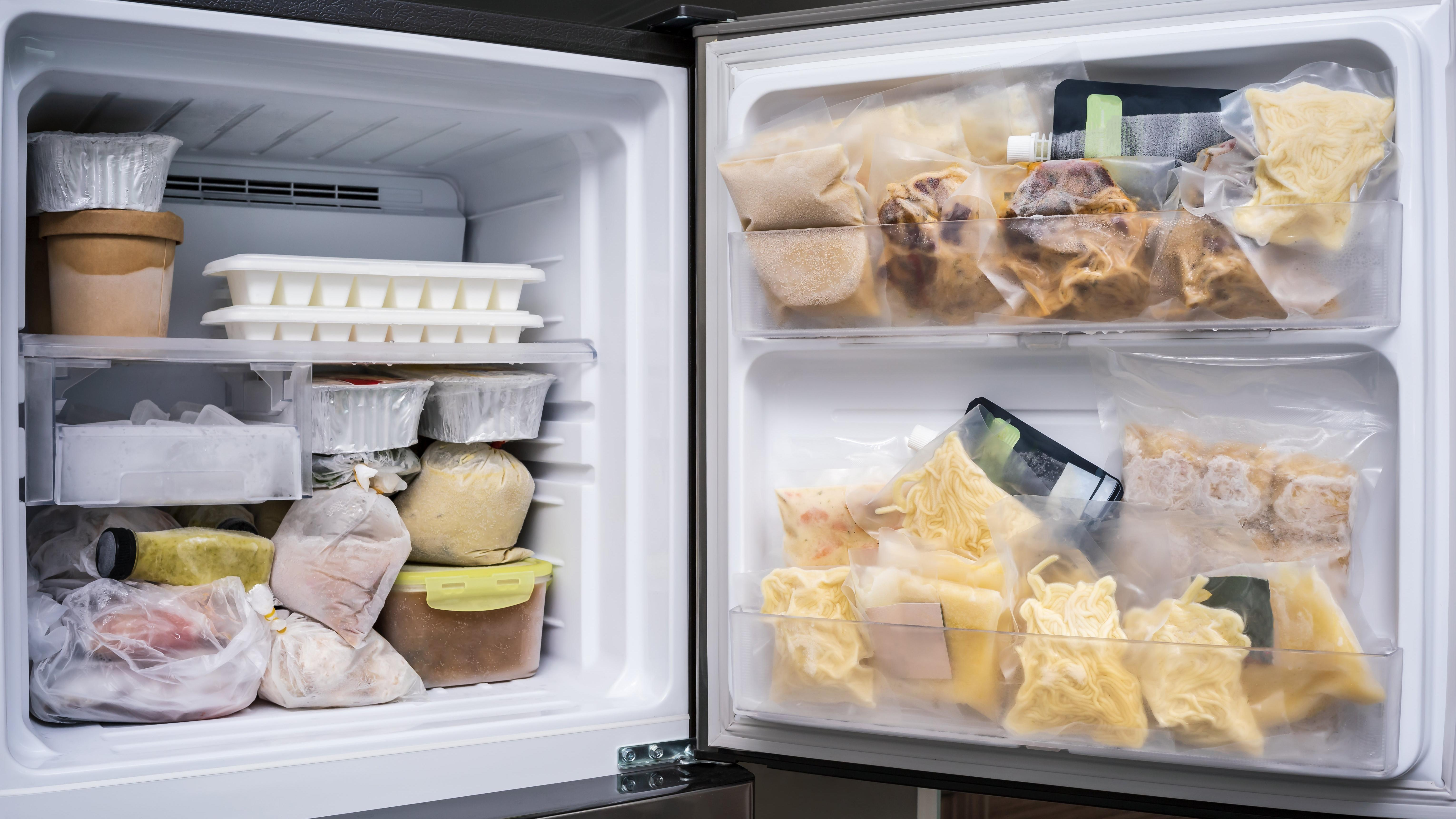How To Keep Your Food Safe From Summer Storms And Floods
You're going to want to save that freezer full of summer treats.
Every summer my family vacations at a cabin in the northern woods. It's not exactly roughing it—there's plumbing and electricity and even HBO. But the wiring is a little more delicate: The septic system isn't always up for the job and the power will go out in the blink of an eye, often several times over the course of our stay due to raging summer storms. Last year I was called by my parents on my drive up—I needed to stop to get as many flashlights as I could, but don't worry, they had the ice box covered. I arrived with a bagful of flashlights in hand to discover that my parents had packed both the freezer and fridge with bags of ice and kept the door closed, leaving just a few items out in an Igloo cooler in case we wanted something to eat or drink.
The ice cream, I was told, needed to be eaten right away because the melting was almost too much. We downed three pints in about 20 minutes. When the power was back on, everything was still cold to the touch—even the ice had barely melted. It's a lesson I'll carry with me through this summer as I just experienced my first power outage of the season, though this year I'm also going to add in some helpful tips straight from the Food and Drug Administration for how to protect your food during a summer storm or flood.
How to prepare your kitchen for a power outage or flood
Make sure your fridge and freezer both have some kind of temperature gauge—if not, you'll definitely want to invest in an appliance thermometer. Your freezer temperature should always be at or below 0 degrees Fahrenheit and your refrigerator should be at 40 degrees or below.
If you have food in your fridge that you know you're not going to touch for a while, go ahead and throw it in the freezer—this includes leftovers, meat, even milk. This will not only help keep those items fresher longer in the case of an emergency, but will provide extra cooling in the freezer that will keep everything packed in there colder longer. If you don't have a ton of food to jam-pack the freezer, just freeze other containers full of water to fill in any empty space to keep everything nice and cold.
Always keep your dried goods on shelves, not on the floor. This will keep any critters from coming into your home to try to snack on them and also keeps them away from the flooding. The higher off the ground your food is kept, the safer it is from any water that might seep in.
For extra safety, store your dried goods in airtight, waterproof containers. And while we're mostly against bottled water, having a jug or two on hand will ensure that you have safe drinking water if a flood compromises your water sources. It's always a good idea to keep some coolers and dry storage containers on hand in case you do need to move your food from your fridge, freezer, or pantry.
What to do with your food if there’s a flood
If your food has obviously been touched by flood water, that's gotta go—that includes damaged and non-waterproof containers like jars and cardboard packages. If your waterproof items have been touched by flood water or if your cans and retort pouches (like flexible, shelf-stable juice or seafood pouches) are undamaged, there's a chance they can be saved!
You just need to clean everything down: remove labels, brush away dirt, wash with soap and sanitized water, and air dry for at least an hour before opening these containers. You're also going to want to use a marker or some other alternative label to mark with expiration dates and any other valuable information from the labels you took off.
If you didn't invest in those jugs of water like we told you to (it's okay, we're not mad, just disappointed), you can create safe drinking water by filtering it through clean clothes and then boiling for at least one minute before storing in clean containers.
How to make sure your food is edible after a power outage
In the case of a power outage, once the power is back on first check the freezer and fridge thermometers to see if they're at those magic numbers (below 0 degrees and below 40 degrees, respectively). If the power is out for four hours or less and you've kept the fridge and freezer doors closed, your food should be fine. You can check items with a food thermometer and if they're at 45 degrees or below, then those items will be safe.
If the power's been out for longer than four hours and the temperature of the fridge is above 40 degrees, it's safest to get rid of any perishable items. Be especially cautious with meat, poultry, seafood, milk, and eggs.
In the freezer, check for ice crystals. If there are still ice crystals on packaging, it's safe to be refrozen. If food has been thawed, toss it out.
And remember, if it seems like the power outage might last a while, there's nothing wrong with opening the freezer just once to get out the ice cream and have yourself a still frozen treat for dinner while you can.
